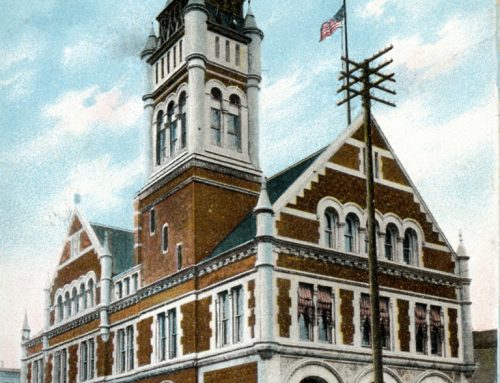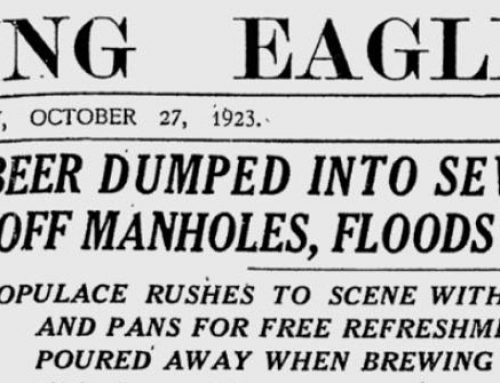“Stoneman Willie,” a local legend and resident of the Theo C. Auman Funeral Home in Reading, PA since 1895 will finally be laid to rest following a service and burial. His mummified body has lain in the Theo C. Auman Funeral Home, 247 Penn St., perfectly preserved for 128 years.
“Stoneman Willie” was a petty thief and alcoholic who went by the alias James Penn. According to a Reading Times article dated, Oct. 8, 1895, James Penn, an alleged Philadelphia crook, was arrested on Tuesday, Oct. 1, 1895, by detectives from Reading. A charge of drunkenness and suspicion was lodged against him and he was sent to jail. He was released on Saturday and on Sunday he prowled about West Reading all day and was furnished with supper by Morris P. Brown, who kept a boarding house in West Reading.
Shortly after 4 o’clock on Monday morning the domestic employed by Mr. Brown felt her bed raised slightly and she quietly arose and left the room. She informed Mr. Brown of her discovery and the door of the room was quickly locked and information telephoned to the police station. Officer Gottshall and Patrol Driver Yonug hurried to West Reading and took Penn into custody. Penn was found with a gold watch, a razor and a pocket book containing a small sum of money, all of which belonged to boarders and members of the family.
He was sent to Berks County Prison, which in 1895 was located in City Park, and was there recognized by Chief of Police Cullen as a professional thief, well known in Philadelphia police circles.
After being committed while awaiting trial on a charge of attempted robbery he developed seizures from severe alcohol withdrawal and became very violent. On November 5 he was attacked with gastritis. On the Nov. 18 he became worse and on the 19th his complaint turned into acute uremia, which caused blood poisoning. He sank rapidly and the physicians told him that his case was hopeless. When asked whether he had relatives he replied that he had brothers and sisters, but would not give their address. On Tuesday evening, Nov. 19, 1895, he died without revealing his Identity.
The man had a light moustache and brown hair. He gave his age as 37. He weighed 159 pounds, was a saddler by trade, was 5 feet 11 Inches tall, bad a light complexion and spoke with a slight foreign accent.
There is a slight clue as to the true identity of James Penn. The information was given by James Clark, who was a cell mate of the man, who gave his name as James Penn, but admitted that it was not his true name.
While occupying the same cell the two men gave each other slight accounts of themselves. Penn’s only reserve was as to his real name, claiming he did not care to have his brother and sister know that he was in jail on a criminal charge. Clark sent a note to Warden Kintzer, in which he states Penn had told him he came to America from Ireland when he was 10 years old. While refusing to give his correct name, Penn said his father was a well-known hotelkeeper in Waterford, Ireland, where he had kept a public house on the Market Square for thirty years. Penn claimed to have been born and lived in that city until he came to this country. He gave his occupation as a saddler, and said that he had traveled considerably In the United States.
While in the West he enlisted in the regular army, in Chicago. The company of which he became a member was sent to the Indian Territory. After serving less than three years he was discharged, suffering with corns on the soles of his feet. He did not give the name of his company or the number of the regiment. He also told Clark he bad a brother and sister living in this country, the one in New York, the other in Brooklynn. Penn’s manner of walking showed he had some military training.
Penn’s body was transported to Aumans Funeral Home on Penn St. in order to preserve the body until next of kin could be located.
Willie’s preservation is the result of an experiment conducted by the late Theodore C. Auman, founder of the funeral home. Auman was browsing through a Philadelphia bookstore in 1895 when he came across a dust-covered German medical tome.
The musty volume, according to family history, contained a chemical formula for preserving meat, in which the elder Auman saw possibilities for his own trade. In that era morticians still placed bodies on ice before the wake.
When no one claimed Willie’s body, Auman saw his chance to experiment with the chemical formula. Family lore has it that the undertaker concocted too powerful a mixture on his first experiment and exploded the cellular tissue, thus preserving the body in a mummified state.
“Stoneman Willie” became a local legend. For more than a century he has resided in a spacious second-floor room at the Auman Funeral Home, tucked into a handsome walnut casket, where anyone who wanted to pay their respects could do so. Dark blue pajamas and a smoking jacket, which are changed every couple of years, set off his skin, which has darkened from dehydration.
His body was available for viewing at the Auman Funeral home, Penn Street, for many years until the family sold the business to Service Corporation International. Although still in the company’s care, it had chosen to no longer make “Stoneman Willie” available for viewing, even though it still received requests.
There’s also a liability issue. Stoneman Wille may be breaking Pennsylvania law by not submitting to burial. The state funeral law, adopted in the 1940s, requires remains to be disposed of within a “reasonable time.” Is remaining unburied for 128 years overstaying your welcome?
Representatives from Auman felt it was past due for Willie to be respectfully laid to rest and are in the initial planning stages of his big send-off.
More information on the services and burial for Stoneman Willie will be announced at a later date.




